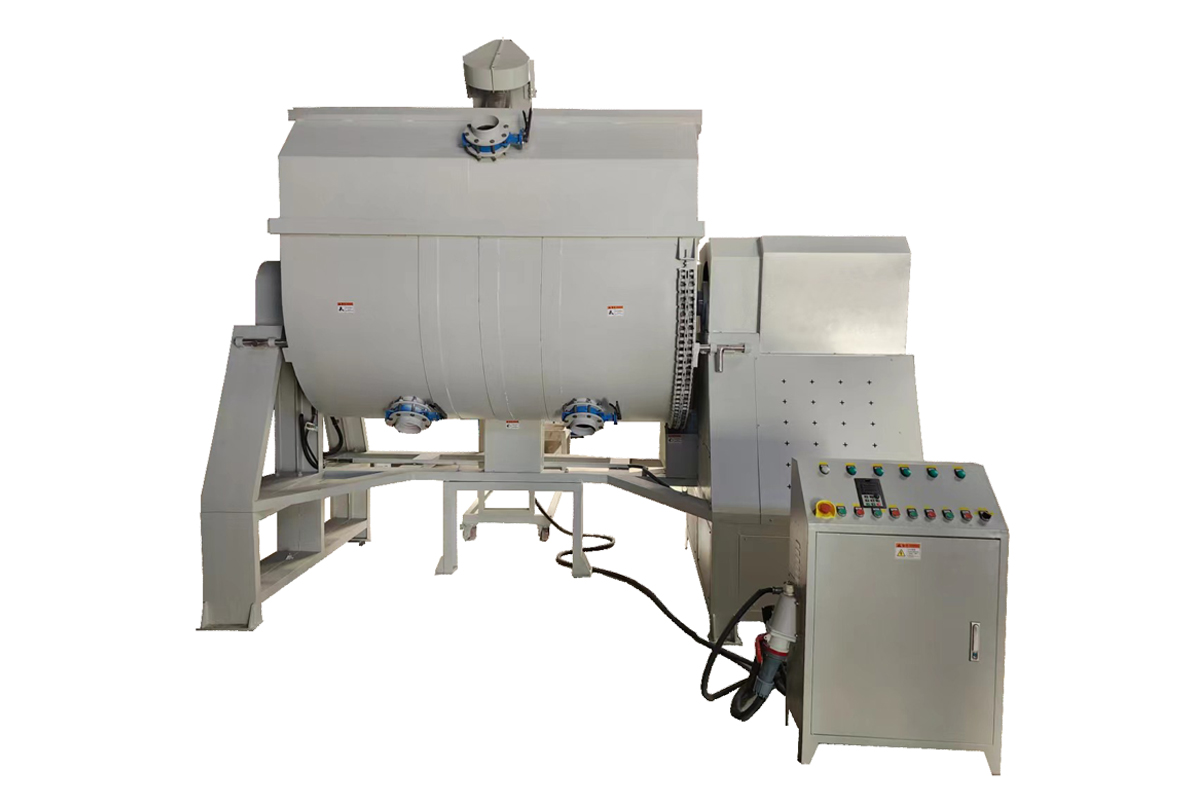Introduction
The Mixer is a critical component in the MCM (Multi-Component Mixing) soft porcelain production line, designed to achieve homogeneous blending of raw materials with precision and efficiency. This equipment plays a vital role in ensuring the consistency and quality of the porcelain slurry before forming processes.

Technical Specifications and Features
The modern MCM porcelain Mixer incorporates several advanced features:
Mixing Capacity: Ranges from 500L to 5000L per batch, with industrial models typically operating at 2000-3000L capacity for optimal production efficiency
Power Consumption: Between 15-45 kW depending on model size, with energy-efficient designs achieving 18-22% reduction in power usage compared to conventional mixers
Mixing Efficiency: Achieves 95-98% homogeneity within 15-25 minutes of operation through optimized blade design
Rotational Speed: Variable speed control from 20-80 RPM, with torque ratings up to 4500 Nm for high-viscosity mixtures
Temperature Control: Integrated heating/cooling jackets maintain slurry temperature within ±2°C of setpoint (typically 22-28°C)
Material Contact Surfaces: Constructed from 316L stainless steel or specialized ceramics with surface roughness Ra ≤ 0.8μm to prevent contamination
Key Operational Parameters
The mixer's performance is characterized by several critical parameters:
Shear Rate: Controlled between 50-150 s⁻¹ to achieve optimal particle dispersion without damaging material structure
Vacuum Capability: Operates at -0.08 to -0.095 MPa for deaeration, reducing bubble content to <0.5% by volume
Load Cell Accuracy: ±0.25% of full scale for precise ingredient measurement
Automation Level: Modern systems feature PLC control with ≤0.5% recipe deviation and data logging of 20+ parameters per batch
Application Scenarios
The MCM porcelain mixer serves multiple applications across the ceramic manufacturing process:
1. Body Preparation
Primary mixing of kaolin (40-60%), feldspar (20-30%), and quartz (15-25%) with water content 28-35% to achieve viscosity of 3000-6000 cP.
2. Glaze Production
Precision blending of frits, colorants, and additives with particle size distribution D50: 8-15μm and specific gravity 1.45-1.65 g/cm³.
3. Specialty Porcelain
For bone china formulations requiring exact ratios of bone ash (45-50%) with kaolin and feldspar, maintaining strict temperature control 25±1°C.
4. Recycled Material Processing
Incorporating 15-30% recycled porcelain content while maintaining rheological properties within ±5% of virgin material standards.
Maintenance Procedures
Proper maintenance ensures optimal performance and longevity of the mixer:
Daily Maintenance
Inspect and clean all seals and gaskets (replace if wear exceeds 0.5mm)
Verify lubrication levels in gearbox (ISO VG 220 oil, maintain between 40-60°C operating temperature)
Check blade clearance (10-15mm from tank wall) and wear (<3% thickness reduction)
Weekly Maintenance
Calibrate load cells to within ±0.5% accuracy
Inspect motor bearings (vibration <2.5 mm/s RMS)
Test emergency stop functionality (<0.5s response time)
Monthly Maintenance
Complete lubrication system flush (replace 100% of oil)
Inspect electrical components for ≥500MΩ insulation resistance
Validate temperature control system accuracy (±1°C)
Annual Maintenance
Complete disassembly and inspection of all wear components
Rebuild gearbox if backlash exceeds 0.15°
Recalibrate all instrumentation to OEM specifications
Troubleshooting Guide
Common issues and solutions:
Problem: Increased power consumption (>10% over baseline)
Solution: Check for blade wear, bearing condition, and slurry viscosity
Problem: Inconsistent mixing (variation >3% in test samples)
Solution: Verify blade configuration, rotational speed, and loading sequence
Problem: Temperature fluctuations (>±3°C from setpoint)
Solution: Inspect heat transfer surfaces, control valves, and sensor calibration
Safety Considerations
Critical safety measures for mixer operation:
Install physical guards for all rotating parts (clearance ≥500mm from hazards)
Implement lockout/tagout procedures with ≤0.5s reaction time for emergency stops
Maintain explosion-proof ratings for areas with dust concentration >30g/m³
Ensure all operators complete ≥8 hours of specific safety training








